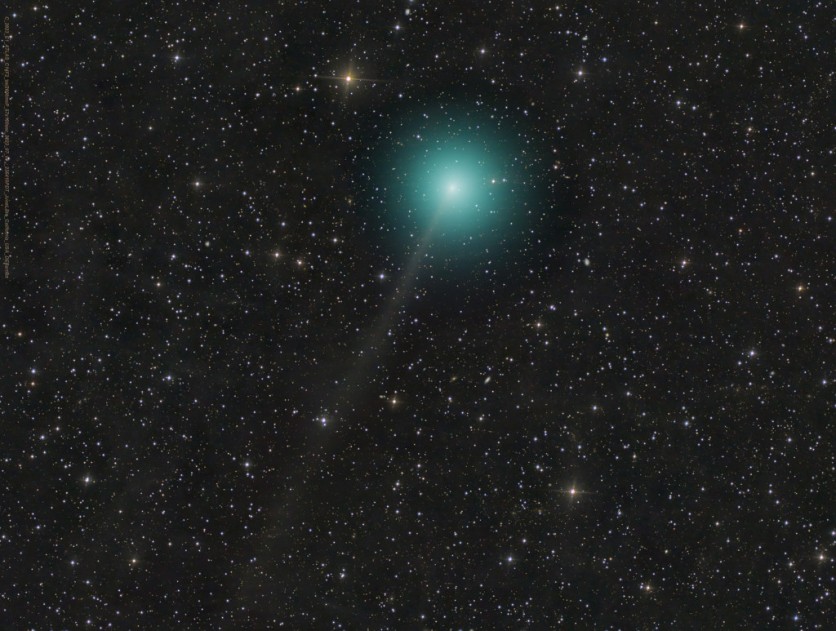The comet known as C/2023 E1 (ATLAS) has taken the celestial stage, drawing closer to its rendezvous with the Sun. Discovered in March through the efforts of the NASA-funded Asteroid Terrestrial-impact Last Alert System, this remarkable comet has added to the growing list of cometary marvels.
On July 1, Comet ATLAS reached perihelion, marking its closest approach to the Sun. Shortly after this milestone, a telescopic image captured the comet in all its glory, showcasing a vibrant greenish coma and a slender, faint ion tail set against the backdrop of stars in the far northern constellation Ursa Minor.

Earth's Cosmic Visitor
While Comet ATLAS has already dazzled observers with its radiant display, its most anticipated encounter is yet to come. On August 18, this cosmic visitor will come within a mere three light-minutes of our planet, offering a rare opportunity to witness its celestial splendor up close.
With its inclination to the ecliptic plane and an orbital period of approximately 85 years, C/2023 E1 (ATLAS) is classified as a Halley-type comet, sharing similarities with the renowned Halley's Comet that graces our skies every 76 years.
The captivating image, skillfully captured by astrophotographer Dan Bartlett, highlights the comet's distinct greenish coma-an enveloping cloud of gas and dust around its nucleus-and a delicate ion tail composed of charged particles influenced by the Sun's radiation.
This mesmerizing visual feast serves as a reminder of the awe-inspiring beauty that lies beyond our terrestrial realm.
Read Also : NASA Releases Never-Before-Seen Photo of Star Birth on 1st Anniversary of James Webb Telescope
Celestial Odyssey
Comets such as ATLAS offer invaluable insights into the formation and evolution of our Solar System. By studying their composition and behavior, scientists gain crucial clues about the origins of celestial bodies and the intricate processes that shape our cosmic surroundings.
NASA's continued exploration and examination of comets contribute to our expanding knowledge of the universe and deepen our understanding of its celestial inhabitants.
As Comet ATLAS continues its celestial odyssey, astronomers and researchers remain vigilant, closely observing its behavior and unraveling its secrets. With each passing moment, new discoveries and a greater appreciation for the mysteries of the cosmos unfold.
The allure of Comet ATLAS extends beyond its visual splendor; it holds scientific treasures waiting to be unlocked. Its encounter with the Sun and its subsequent approach to Earth offers a precious opportunity for scientists to gather data and expand our comprehension of comets and their significance within the grand tapestry of the cosmos.
Related Article : NASA's Hubble Space Telescope Captures 'Butterfly Nebula' In Stunning Motion | Fun Facts About This Beautiful Space Butterfly

ⓒ 2025 TECHTIMES.com All rights reserved. Do not reproduce without permission.




